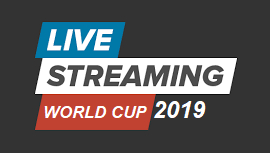Streaming is the method of knowledge transmission used when someone watches a video on the net. it’s the simplest way to deliver a video file a bit at a time, often from a distant storage location. By transmitting some seconds of the file at a time over the net, client devices don’t need to download the whole video before getting down to play it. بث مباشر مباريات اليوم is for live streaming now.
Live streaming is when the streaming video is shipped over the net in real-time, without first being recorded and stored. Today, TV broadcasts, computer game streams, and social media videos can all be live-streamed.
Think about the difference between regular streaming and live streaming because of the difference between an actor reciting a memorized monologue and improvising a speech. within the former, the content is formed beforehand, stored, then relayed to the audience. within the latter, the audience receives the content within the same moment that the actor creates it – rather like in live streaming.
The term live streaming usually refers to broadcast live streams: one-to-many connections that venture out to multiple users directly. Videoconferencing technologies like Skype, FaceTime, and Google Hangouts Meet work on real-time communication (RTC) protocols instead of the protocols employed by one-to-many live stream broadcasts.
How does live streaming work on a technical level?

These are the most steps that happen behind the scenes in a very live stream:
- Segmentation
- Compression
- Encoding
- Content delivery network (CDN) distribution
- CDN caching
- Decoding
- Video playback
- Video capture
Live streaming starts with raw video data: the visual information captured by a camera. Within the data processor to which the camera is attached, this visual information is represented as digital data – in other words, 1s and 0s at the deepest level.
Segmentation
The video includes lots of digital information, which is why it takes longer to download a video file than to download a brief PDF or a picture. Because it might not be practical to send all the video data out over the web without delay, streaming video is split into smaller segments some seconds long.
Compression and encoding
Next, the segmented video data is compressed and encoded. the info is compressed by removing redundant visual information. for instance, if the primary frame of the video displays an individual talking against a gray background, the grey background mustn’t render for any subsequent frames that have an identical background.
Think of video compression as being like adding a chunk of recent furniture to a front room. it’s not necessary to shop for entirely new furniture on every occasion a replacement chair or side table is added. Instead, it’s possible to stay the space layout roughly the identical and alter out only 1 piece at a time, occasionally making larger rearrangements as necessary. Similarly, not every frame of a video stream has to be rendered in total – just the parts that change from frame to border, as the movement of somebody’s mouth.
“Encoding” refers to the method of converting data into a replacement format.




